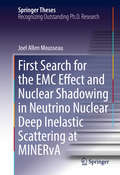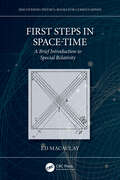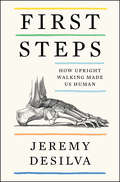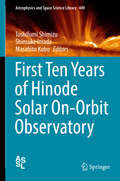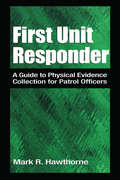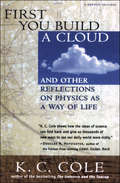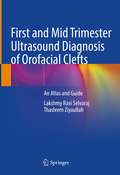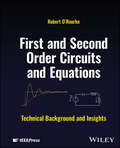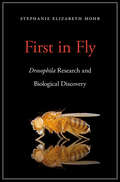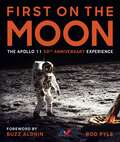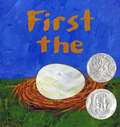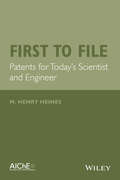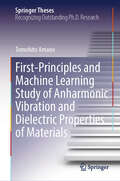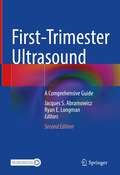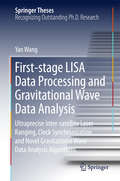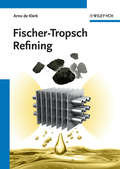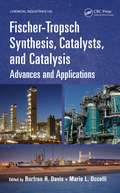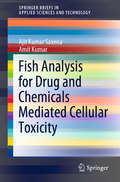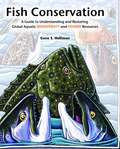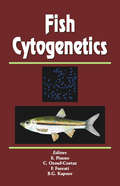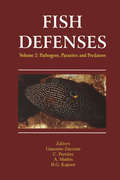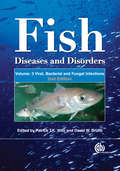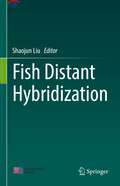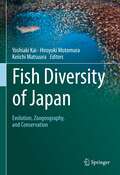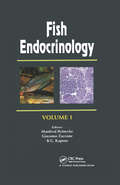- Table View
- List View
First Search for the EMC Effect and Nuclear Shadowing in Neutrino Nuclear Deep Inelastic Scattering at MINERvA
by Joel Allen MousseauThis thesis details significant improvements in the understanding of the nuclear EMC effect and nuclear shadowing in neutrino physics, and makes substantial comparisons with electron scattering physics. Specifically, it includes the first systematic study of the EMC ratios of carbon, iron and lead to plastic scintillator of neutrinos. The analysis presented provides the best evidence to date that the EMC effect is similar between electrons and neutrinos within the sensitivity of the data. Nuclear shadowing is measured systematically for the first time with neutrinos. In contrast with the data on the EMC effect, the data on nuclear shadowing support the conclusion that nuclear shadowing may be stronger for neutrinos than it is for electrons. This conclusion points to interesting new nuclear physics.
First Steps in Space-Time: A Brief Introduction to Special Relativity (Discovering Physics)
by Ed MacaulayFirst Steps in Space-Time: A Brief Introduction to Special Relativity provides an accessible, authentic, and readable introduction to the theory of special relativity. The academic level of the book builds only on skills that would be covered in a GCSE maths course, such as Pythagoras's theorem, and rearranging equations, and no prior knowledge of relativity (or physics) is assumed. The key benefits of the work are to bridge the gap between popular science books and university textbooks, and make the theory of relativity as broadly accessible as physically possible. The book allows the reader to discover and appreciate that relativity is not an intractable esoteric curiosity, but a beautiful and succinct theory that profoundly shaped the course of history and our interpretation of our day-to-day lives. This book is ideal for readers with an interest in physics and a little working knowledge of maths, who have studied mathematics at about A-level standard: professionals such as accountants, bankers, doctors, economists, engineers, lawyers, pharmacists and teachers, or high school students who might be considering studying physics or a related subject at university.
First Steps: How Upright Walking Made Us Human
by Jeremy DeSilvaA Science News Best Science Book of the Year: “A brilliant, fun, and scientifically deep stroll through history, anatomy, and evolution.” —Agustín Fuentes, PhD, author of The Creative Spark: How Imagination Made Humans ExceptionalWinner of the W.W. Howells Book Prize from the American Anthropological AssociationBlending history, science, and culture, this highly engaging evolutionary story explores how walking on two legs allowed humans to become the planet’s dominant species.Humans are the only mammals to walk on two rather than four legs—a locomotion known as bipedalism. We strive to be upstanding citizens, honor those who stand tall and proud, and take a stand against injustices. We follow in each other’s footsteps and celebrate a child’s beginning to walk. But why, and how, exactly, did we take our first steps? And at what cost? Bipedalism has its drawbacks: giving birth is more difficult and dangerous; our running speed is much slower than other animals; and we suffer a variety of ailments, from hernias to sinus problems.In First Steps, paleoanthropologist Jeremy DeSilva explores how unusual and extraordinary this seemingly ordinary ability is. A seven-million-year journey to the very origins of the human lineage, this book shows how upright walking was a gateway to many of the other attributes that make us human—from our technological abilities to our thirst for exploration and our use of language—and may have laid the foundation for our species’ traits of compassion, empathy, and altruism. Moving from developmental psychology labs to ancient fossil sites throughout Africa and Eurasia, DeSilva brings to life our adventure walking on two legs.Includes photographs“A book that strides confidently across this complex terrain, laying out what we know about how walking works, who started doing it, and when.” —The New York Times Book Review“DeSilva makes a solid scientific case with an expert history of human and ape evolution.” —Kirkus Reviews“A brisk jaunt through the history of bipedalism . . . will leave readers both informed and uplifted.” —Publishers Weekly“Breezy popular science at its best.” —Science News
First Ten Years of Hinode Solar On-Orbit Observatory (Astrophysics and Space Science Library #449)
by Toshifumi Shimizu Shinsuke Imada Masahito KuboThis book provides the latest scientific understanding of the Sun, sharing insights gleaned from the international solar physics project Hinode. The authors (who are the main project contributors) review, from the various viewpoints, the discoveries and advances made by the on-orbit operations of the Hinode spacecraft in its first decade. Further, they present a wealth of scientifically important photographs and data from Hinode. Launched in September 2006, Hinode is the third Japanese solar observatory on orbit, and employs three highly advanced telescopes jointly developed and operated with international partners. The book describes the background of these research topics, how the Hinode telescopes have tackled various challenges, and the scientific achievements and impacts in the first 10 years. Furthermore, it explores future perspective of researches in Japan. The book will benefit undergraduate students interested in recent advance in the solar research, as well as graduate students and researchers working in solar physics, the space sciences, astronomy, and plasma physics.
First Unit Responder: A Guide to Physical Evidence Collection for Patrol Officers
by Mark R. HawthorneFirst Unit Responder: A Guide to Physical Evidence Collection for Patrol Officers is a training guide and reference for patrol officers and criminal investigators, who conduct preliminary investigations of crime scenes, to aid in identification, collection, and booking of physical evidence. Written by a veteran of 24 years of law enforcement, the book stresses the importance of understanding the critical nature of physical evidence and preservation of the crime scene as part of the case against a criminal defendant. This book is an important tool for police academies that train recruits and veteran patrol officers, as well as for students of criminal justice who seek guidelines for proper collection and handling of physical evidence.
First You Build a Cloud: And Other Reflections on Physics as a Way of Life
by K. C. ColeThis clearly written and compelling look at physics and physicists offers &“thousands of new ways to see our daily world more richly&” (Douglas Hofstadter, author of Gödel, Escher, Bach). For many of us, physics has always been a thing of mystery and complexity. K. C. Cole, an award-winning science writer, specializes in making its wonders accessible to the everyday reader. This book uses lively prose, metaphors, and anecdotes to allow us to comprehend the nuances of physics: gravity and light, color and shape, quarks and quasars, particles and stars, force and strength. It also shows us how the physical world is so deeply intertwined with the ways we think about culture, poetry, and philosophy, and explores the workings of such legendary scientific minds as Richard Feynman, Victor Weisskopf, brothers Frank Oppenheimer and J. Robert Oppenheimer, Philip Morrison, Vera Kistiakowsky, and Stephen Jay Gould. &“An exemplary science writer . . . For readers without scientific background, Cole gracefully introduces relativity, quantum theory, optics, astrophysics, and other significant disciplines, never getting bogged down in unnecessary explanation. Thus, you may not learn all about thermodynamics from reading her chapter on it, but you will learn enough to think seriously about the entropy in your own life. Cole sprinkles her text with comments from famous scientists—&‘Space is blue, and birds fly in it,&’ said Heisenberg, and Faraday said, &‘Nothing is too wonderful to be true&’—that are not only delightful in themselves but perfectly suited to her own text. No review of Cole&’s book could be too wonderful to be true.&” —Booklist
First and Mid Trimester Ultrasound Diagnosis of Orofacial Clefts: An Atlas and Guide
by Lakshmy Ravi Selvaraj Thasleem ZiyaullahThis book aims to highlight all the existing information available on first and mid-trimester imaging of palate in prenatal ultrasound and to develop a methodical approach in imaging the palate. As formation of the palate is completed by 11 weeks of gestation and as there are no evolving changes in palatine anatomy at the mid-trimester, diagnosis of palatine clefts can now completely be shifted to late first-trimester. First-trimester evaluation of palate is now gaining importance and a number of techniques have currently been proposed by different authors.This book covers the existing literature and recent 2D and 3D techniques in evaluating palate and helps in the early detection of palatine clefts in the first trimester. Orofacial clefting is one of the most common birth defects and the burden of it in developing countries is substantial. This book helps in improving the counseling options for the obstetrician and the couple early in gestation. It includes 2D and 3D images of various types of palatine clefts and the nuances in imaging the secondary palate extensively. 3D images of the palate also help the multi-disciplinary team especially the maxillofacial surgeons involved in managing orofacial clefts. It also includes videos for easy understanding.This book is a ready reckoner for the imaging specialists and students /trainees involved in prenatal diagnosis. It provides essential information in diagnosing orofacial cleft both to the novice and to the skilled professionals involved in the field of diagnostic fetal ultrasound.
First and Second Order Circuits and Equations: Technical Background and Insights
by Robert O'RourkeHelp protect your network with this important reference work on cyber security First and second order electric and electronic circuits contain energy storage elements, capacitors and inductors, fundamental to both time and frequency domain circuit response behavior, including exponential decay, overshoot, ringing, and frequency domain resonance. First and Second Order Circuits and Equations provides an insightful and detailed learning and reference resource for circuit theory and its many perspectives and duals, such as voltage and current, inductance and capacitance, and serial and parallel. Organized and presented to make each information topic immediately accessible, First and Second Order Circuits and Equations offers readers the opportunity to learn circuit theory faster and with greater understanding. First and Second Order Circuits and Equations readers will also find: Root locus charts of second order characteristic equation roots both in terms of damping factor ζ as well as damping constant α. Detailed treatment of quality factor Q and its relationship to bandwidth and damping in both frequency and time domains. Inductor and capacitor branch relationship step response insights in terms of calculus intuition. Derivations of voltage divider and current divider formulae in terms of Kirchhoff’s laws. First and Second Order Circuits and Equations is an essential tool for electronic industry professionals learning circuits on the job, as well as for electrical engineering, mechanical engineering, and physics students learning circuits and their related differential equations.
First in Fly: <i>Drosophila</i> Research and Biological Discovery
by Stephanie Elizabeth MohrA single species of fly, Drosophila melanogaster, has been the subject of scientific research for more than one hundred years. Why does this tiny insect merit such intense scrutiny? Drosophila’s importance as a research organism began with its short life cycle, ability to reproduce in large numbers, and easy-to-see mutant phenotypes. Over time, laboratory investigation revealed surprising similarities between flies and other animals at the level of genes, gene networks, cell interactions, physiology, immunity, and behavior. Like humans, flies learn and remember, fight microbial infection, and slow down as they age. Scientists use Drosophila to investigate complex biological activities in a simple but intact living system. Fly research provides answers to some of the most challenging questions in biology and biomedicine, including how cells transmit signals and form ordered structures, how we can interpret the wealth of human genome data now available, and how we can develop effective treatments for cancer, diabetes, and neurodegenerative diseases. Written by a leader in the Drosophila research community, First in Fly celebrates key insights uncovered by investigators using this model organism. Stephanie Elizabeth Mohr draws on these “first in fly” findings to introduce fundamental biological concepts gained over the last century and explore how research in the common fruit fly has expanded our understanding of human health and disease.
First on the Moon: The Apollo 11 50th Anniversary Experience
by Rod PyleIn honor of the 50th anniversary of the groundbreaking Apollo 11 mission, this lavishly illustrated book—featuring stunning photographs and many rarely seen images and documents—tells the incredible story of the first men on the Moon. Acclaimed science author Rod Pyle (Missions to the Moon) returns with a beautiful and insightful book commemorating Apollo 11. First on the Moon offers an exciting behind-the-scenes look at America&’s journey to the Moon—from the space race to the landing on the Sea of Tranquility to splashdown on Earth and the aftermath. Pyle spent years combing NASA archives and private collections for memorabilia from the mission, and the book includes everything from accessible explanations of the enormous challenges facing NASA to reproductions of original 1969 documents. It also features a number of specially commissioned photocompositions created from NASA Apollo images released in 2015. Many were parts of photomontages taken by the astronauts, and these compositions have now been carefully restored to their originally intended montage formats. With compelling firsthand accounts and a gripping narrative, this gorgeously designed volume fully immerses readers in the Space Age. Includes a foreword by Buzz Aldrin, and exclusive interviews with the adult children of the Apollo 11 astronauts.
First the Egg
by Laura Vaccaro SeegerWhich came first, the chicken or the egg? The caterpillar or the butterfly? These and other origin questions are answered in a short collection of verses<P><P> Winner of the Theodore Seuss Geisel Honor
First to File: Patents for Today's Scientist and Engineer
by M. Henry HeinesBridges the gap between the realistic needs and questions of scientists and engineers and the legal skills of professionals in the patent field at a level accessible to those with no legal training * Written for inventors in lay terms that they can relate to or easily follow * Lays out the new features of patent law introduced by the America Invents Act of 2012 * Explains the differences between the first-to-invent and first-to-file rules and why the two rules will coexist * Focuses on the growth of new technologies in industry versus the laws protecting them
First-Principles and Machine Learning Study of Anharmonic Vibration and Dielectric Properties of Materials (Springer Theses)
by Tomohito AmanoThe book presents the author's development of two first-principles methods to calculate dielectric properties of materials based on anharmonic phonon and machine learning, and demonstrates an in-depth analysis of anharmonic crystals and molecular liquids. The anharmonic phonon method, combined with Born effective charges, is useful to study dielectric properties of crystals. The recently developed self-consistent phonon theory (SCPH) enables accurate simulations in strongly anharmonic materials. The author reveals that the combination of SCPH with the four-phonon scattering term accurately reproduces experimental spectra, and discusses how anharmonic phonon self-energies affect the dielectric properties. The second method is molecular dynamics with Wannier centers—the mass centers of Wannier functions. The author constructs a machine learning model that learns Wannier centers for each chemical bond from atomic coordinates to accurately predict the dipole moments. The developed method is, in principle, applicable to molecules of arbitrary size. Its effectiveness is demonstrated and the dielectric properties of several alcohols, including dipole moments, dielectric constants, and absorption spectra, are analyzed. This book benefits students and researchers interested in anharmonic phonons, machine learning, and dielectric properties.
First-Trimester Ultrasound: A Comprehensive Guide
by Jacques S. Abramowicz Ryan E. LongmanThis second edition offers a unique and focused study of the use of ultrasound during the first trimester, a critical time in a fetus’ development. It includes basic examination guidelines as well as cutting-edge ultrasound modalities, including Doppler and three-dimensional ultrasound, for the period immediately preceding conception through early embryology. Fully updated, the text begins with a discussion of the safety and efficacy of diagnostic ultrasound and the use of this modality for the evaluation and treatment of infertility. Recognized experts in the field then explore conditions that may interfere with normal conception or development, including maternal diseases that would benefit from early scanning, elements of teratology, multiple gestations, ectopic pregnancy, gestational trophoblastic disease, fetal anomalies and invasive procedures in the first trimester. This edition includes seven new chapters focusing on the imaging of fetal development, including chapters on the first trimester fetal brain, genitourinary tract, and diagnosis of fetal genetic syndromes. Numerous illustrations, figures, and online videos serve as aides for understanding key concepts. First-Trimester Ultrasound, 2e is a valuable resource for many, in or after training, in obstetrics and gynecology, radiology, emergency medicine, family medicine and genetics.
First-stage LISA Data Processing and Gravitational Wave Data Analysis
by Yan WangThis thesis covers a diverse set of topics related to space-based gravitational wave detectors such as the Laser Interferometer Space Antenna (LISA). The core of the thesis is devoted to the preprocessing of the interferometric link data for a LISA constellation, specifically developing optimal Kalman filters to reduce arm length noise due to clock noise. The approach is to apply Kalman filters of increasing complexity to make optimal estimates of relevant quantities such as constellation arm length, relative clock drift, and Doppler frequencies based on the available measurement data. Depending on the complexity of the filter and the simulated data, these Kalman filter estimates can provide up to a few orders of magnitude improvement over simpler estimators. While the basic concept of the LISA measurement (Time Delay Interferometry) was worked out some time ago, this work brings a level of rigor to the processing of the constellation-level data products. The thesis concludes with some topics related to the eLISA such as a new class of phenomenological waveforms for extreme mass-ratio inspiral sources (EMRIs, one of the main source for eLISA), an octahedral space-based GW detector that does not require drag-free test masses, and some efficient template-search algorithms for the case of relatively high SNR signals.
Fischer-Tropsch Refining: Coal-to-liquids Production And Refining (Catalysis Ser. #4)
by Arno De KlerkThe Fischer-Tropsch process is gaining recognition again due to the world-wide increase in energy needs and decrease in oil availability. The increasing interest in utilizing biomass as a potential renewable feedstock in energy generation is further supporting this development. The book covers the production and refining of Fischer-Tropsch syncrude to fuels and chemicals systematically and comprehensively, presenting a wealth of new knowledge and material. As such, it deals extensively with aspects of engineering, chemistry and catalysis. This handbook and ready reference adopts a fundamental approach, looking at the molecules and their transformation from feed to product. Numerous examples illustrate the possibilities and limitations of Fischer-Tropsch syncrude as feesdstock. Of great interest to everyone interested in refining - not just Fischer-Tropsch specialists. From the Contents: Fischer-Tropsch Facilities and Refineries at a Glance Production of Fischer-Tropsch Syncrude Industrial Fischer-Tropsch Facilities Synthetic Transportation Fuels Refining Technology Refinery Design
Fischer-Tropsch Synthesis, Catalysts, and Catalysis: Advances and Applications (Chemical Industries Ser. #Vol. 142)
by Burtron H. Davis Mario L. OccelliWith petroleum prices spiraling upward, making synthetic fuels-or "synfuels"-from coal, natural gas, and biomass has become more economically competitive. Advanced energy companies now focus exclusively on alternative fuels, and many oil companies have programs dedicated to developing synthetic fuels. The Fischer-Tropsch process, which uses a colle
Fish Analysis for Drug and Chemicals Mediated Cellular Toxicity (SpringerBriefs in Applied Sciences and Technology)
by Amit Kumar Ajit Kumar SaxenaThis book offers a comprehensive overview of drug and chemical cellular toxicity, especially concerning the effects of anticancer drugs (cyclophosphamide, methotrexate and phosphamidon) on chromosomes and proteins. It covers histological changes in rat testis during pre- and postnatal exposure to varied drug doses, along with laboratory findings on arsenic exposure and alcohol consumption producing neurological changes and deleterious effects on reproductive health in animals. The book offers essential information on the role of anticancer drug- / chemical-mediated toxicity in connection with genetic changes in the brain and reproductive health, making it a valuable guide for researchers working in the areas of cancer research, infertility, molecular diagnostics and modern drug discovery, at biochemical and toxicity laboratories, and in genetic predisposition and molecular biology in general.
Fish Conservation: A Guide to Understanding and Restoring Global Aquatic Biodiversity and Fishery Resources
by Gene S. HelfmanFish Conservation offers, for the first time in a single volume, a readable reference with a global approach to marine and freshwater fish diversity and fishery resource issues. Gene Helfman brings together available knowledge on the decline and restoration of freshwater and marine fishes, providing ecologically sound answers to biodiversity declines as well as to fishery management problems at the subsistence, recreational, and commercial levels. Written in an engaging and accessible style, the book:considers the value of preserving aquatic biodiversityoffers an overview of imperiled fishes on a taxonomic and geographic basispresents a synthesis of common characteristics of imperiled fishes and their habitatsdetails anthropogenic causes of declineexamines human exploitation issuesaddresses ethical questions surrounding exploitation of fishesThe final chapter integrates topics and evaluates prospects for arresting declines, emphasizing the application of evolutionary and ecological principles in light of projected trends. Throughout, Helfman provides examples, explores case studies, and synthesizes available information from a broad taxonomic, habitat, and geographic range.Fish Conservation summarizes the current state of knowledge about the degradation and restoration of diversity among fishes and the productivity of fishery resources, pointing out areas where progress has been made and where more needs to be done. Solutions focus on the application of ecological knowledge to solving practical problems, recognizing that effective biodiversity conservation depends on meeting human needs through management that focuses on long term sustainability and an ecosystem perspective.
Fish Cytogenetics
by E. PisanoIn the past 20 years, fish cytogenetics has become an essential tool in fields as diverse as systematics and evolution, conservation, aquaculture and more recently, genomics. This book is organized in four sections (systematics and evolution; biodiversity conservation; stock assessment and aquaculture; genomics) covering the major fields of present
Fish Defenses Vol. 2: Pathogens, Parasites and Predators
by Giacomo ZacconeDramatic changes in the environment, including habitat degradation and climate change, have focused attention on how individuals and populations respond to a shifting biotic and abiotic landscape. A critical step toward meeting this goal is a clear understanding of the capacity of individuals to defend themselves against threats. Changes in water q
Fish Diseases and Disorders, Volume 3: Viral, Bacterial and Fungal Infections (2nd edition)
by Patrick T. K. Woo David W. BrunoThis third and final volume in the acclaimed Fish Diseases and Disorders trilogy addresses infectious diseases of finfish and shellfish caused by viruses, bacteria and fungi. Topics covered include infectious pancreatic necrosis virus, infectious hematopoiectic necrosis virus, viral diseases of cold- and warm-water fish, rickettsial and chlamydial infections, furunculosis, motile aeromonads, vibriosis, flavobacterial diseases and shellfish diseases. Written by experts in each discipline and updated throughout to reflect new developments in the field, including new chapters on alphaviruses, oncogenic viruses and genomics and proteomics, this is a must-have reference for fish health specialists and veterinarians, microbiologists, zoologists and researchers, and students in aquaculture.
Fish Distant Hybridization
by Shaojun LiuThe book introduces fish distant hybridization, which covers the basic theory and applications of fish distant hybridization as well as the main biological characteristics of different ploidy fish at the individual, tissue, cell, and molecular level. It is divided into 12 Chapters. The research progresses of animal distant hybridization and polyploids in domestic and overseas are summarized in this book. The characteristics of these hybrids and polyploid fish are also illustrated on basis of considering factors of the chromosomes numbers, phylogenetic relationship, reproduction, appearance, feeding habits, growth rate, and stress resistance. The creation of fish distant hybridization lineages will provide a clear genetic background which is helpful for the study of the strain generation as a model in genetic variation characteristics and reproductive characteristics. Fully illustrated in color, this book provides unique ideas in system description and presentation of distant hybridization and polyploidy fish. In fish genetic breeding, the tetraploid fish lineage and diploid fish lineage, formed through distant hybridization, can be used for preparing large-scale triploid and diploid fish. This book is a useful reference for researchers in fish genetic breeding, aquaculture, developmental biology, and animal evolution, and serves as a valuable resource for students and researchers engaging in zoology, evolutionary biology, and genetics.
Fish Diversity of Japan: Evolution, Zoogeography, and Conservation
by Yoshiaki Kai Hiroyuki Motomura Keiichi MatsuuraThis book reviews and summarizes the studies on the fish diversity of Japan. It covers the present knowledge of ichthyofauna, habitat distribution, phylogeography, ecology, morphology, and conservation, as well as the history of ichthyology and fish collections in Japan. The book comprises five parts: I. Fish Diversity and Ichthyology of Japan, II. Habitat Distribution and Species Diversity, III. Diversity within Species: Phylogeographic Perspective on Japanese Fishes, IV. Morphological and Ecological Diversifications, and V. Conservation of Fish Diversity in Japan. The Japanese Archipelago is surrounded by two major warm and one cold currents. It is located in the western North Pacific and encompasses several climatic regimes from north to south. Although the land area of Japan is small, the Exclusive Economic Zone (EEZ) of Japan ranks as the sixth largest in the world, including several marginal seas (Sea of Okhotsk, Sea of Japan, and East China Sea), and deep trenches (Izu-Ogasawara, Japan, and Kurile Trenches). Owing to a variety of marine habitats and a complex geological history, Japan has a rich fish species diversity, representing over 4,500 species in 370 families. The richness of fish species diversity has attracted many scientists since the late 1700s, and continuous studies have led to the development of ichthyology in Japan. With chapters written by leading experts in the field, the book will provide a stimulating and reliable resource for future research and contribute to the progress of ichthyology of the world.
Fish Endocrinology (2 Vols.)
by Giacomo Zaccone B. G. Kapoor Manfred ReineckeDuring the past two decades, fish endocrinology has witnessed exciting developments due to our increased knowledge at all levels of biological organizations, including molecular biology, cell biology, physiology and behavior. New insights into development, neurobiology, immunology and molecular genetics closely correlated with classical aspects of
